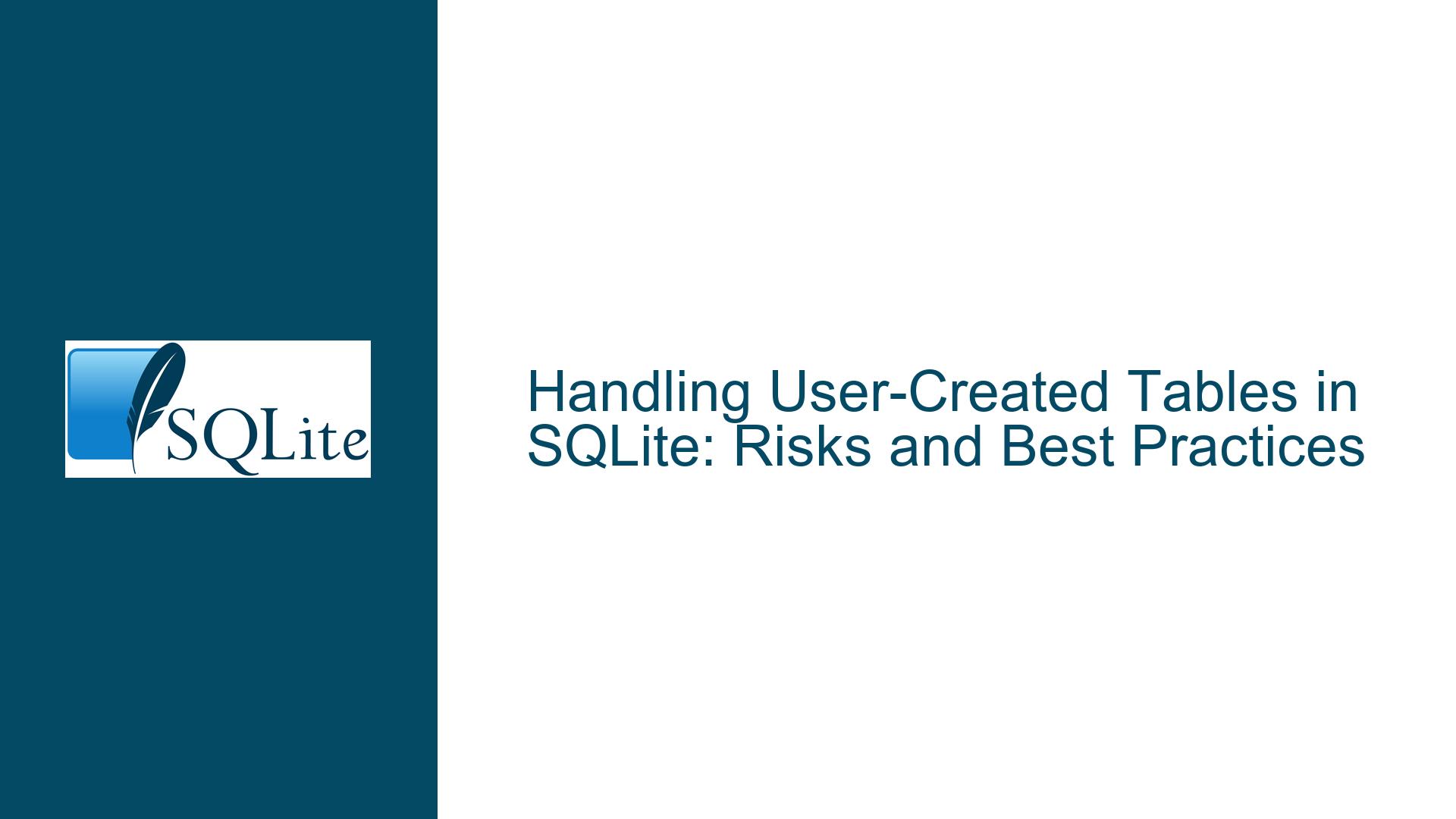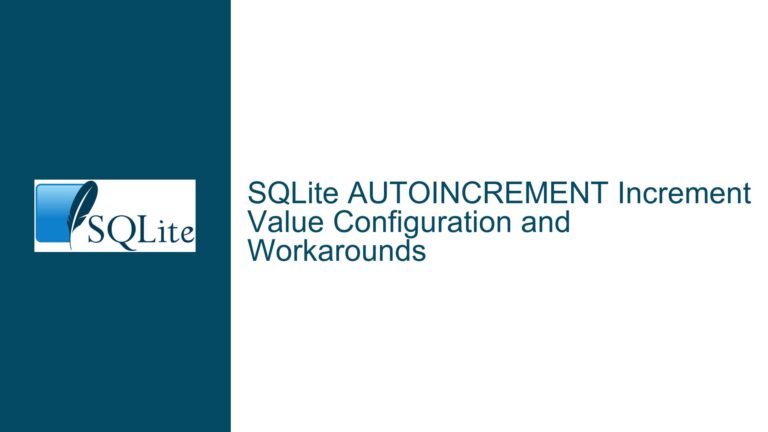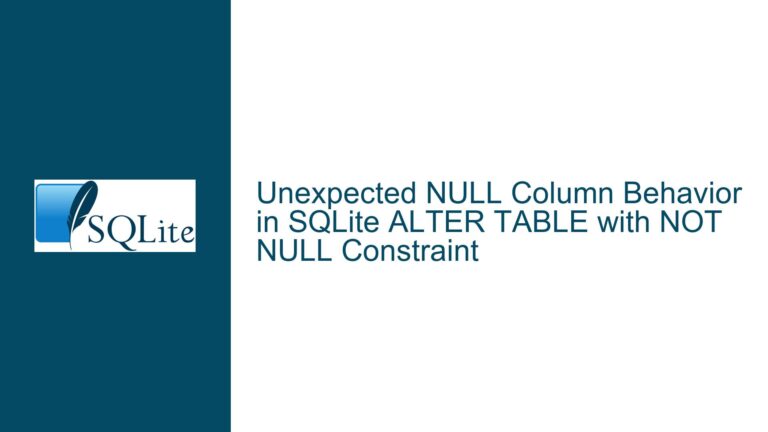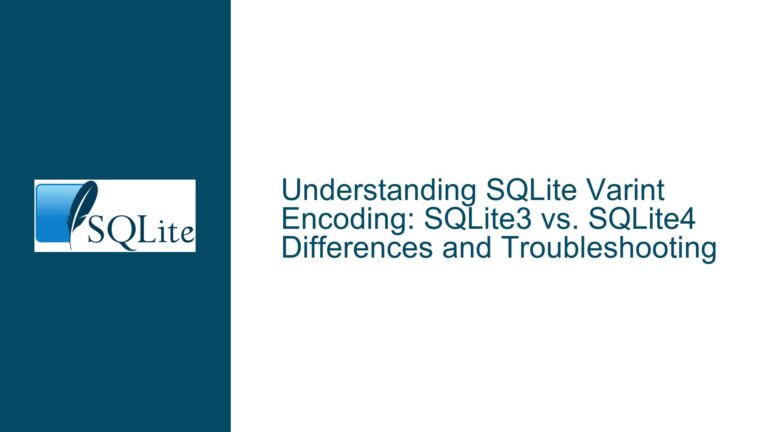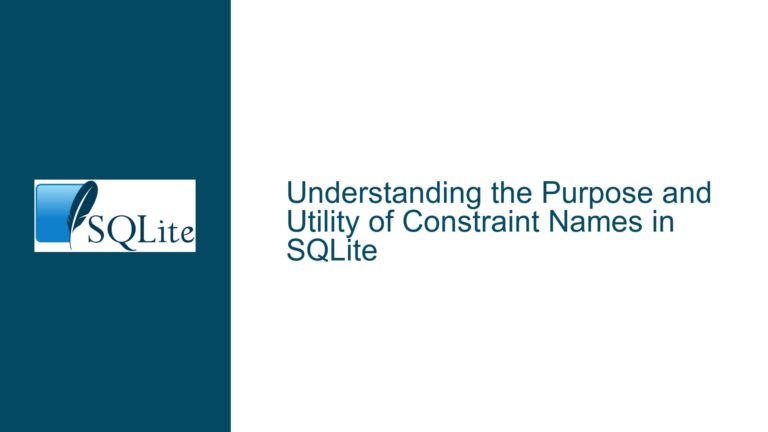Handling User-Created Tables in SQLite: Risks and Best Practices
User-Created Tables and the Risk of Database Corruption
When developing an application that allows users to create their own tables in an SQLite database, the primary concern is ensuring the integrity and stability of the database. Allowing users to define table schemas dynamically introduces a range of potential issues, from schema corruption to security vulnerabilities. While the application in question is local and intended for a single user, the risks of database corruption remain significant. The user’s ability to define table names, column names, and data types can lead to unintended consequences if not properly validated and managed.
One of the most critical risks is the potential for schema corruption. SQLite relies on a well-defined schema to manage data storage and retrieval efficiently. If a user creates a table with invalid or conflicting column names, or if they attempt to modify the schema in an unsupported way, the database may become corrupted. For example, using reserved keywords as column names or including special characters in table names can cause SQL queries to fail or produce unexpected results. Additionally, if the user-defined schema conflicts with the application’s internal logic, the application may crash or behave unpredictably.
Another concern is the potential for data corruption. Even if the schema is valid, improper data validation can lead to issues such as type mismatches, null values in non-nullable columns, or duplicate entries in unique columns. These issues can propagate through the database, affecting not only the user-created table but also other tables and relationships within the database. For instance, if the application relies on foreign key constraints or joins between tables, a corrupted user-created table could break these relationships, leading to data inconsistencies.
Dynamic Schema Creation and Security Implications
Allowing users to create tables dynamically introduces significant security implications, even in a local, single-user environment. While the application may not be exposed to external threats, the user’s actions can still compromise the database’s integrity. For example, a user could inadvertently or maliciously create a table with a name that conflicts with an existing system table or a table used by the application. This could lead to data loss or corruption, as the application may overwrite or misinterpret the contents of the conflicting table.
Furthermore, the use of unsanitized user input in SQL queries can lead to SQL injection vulnerabilities. Even in a local environment, SQL injection can be exploited to execute arbitrary SQL commands, potentially altering or deleting data, or even corrupting the entire database. For example, if the application constructs SQL queries by concatenating user input without proper sanitization, a user could inject malicious SQL code into the query, such as dropping a table or modifying the schema.
To mitigate these risks, it is essential to implement strict validation and sanitization of user input. This includes validating table and column names to ensure they conform to SQLite’s naming conventions and do not conflict with reserved keywords or existing tables. Additionally, all user input used in SQL queries should be parameterized or escaped to prevent SQL injection attacks. While these measures may add complexity to the application, they are necessary to ensure the database’s integrity and security.
Implementing Metadata Tables and Schema Validation
One approach to managing user-created tables is to use a metadata table to store information about the user-defined schemas. Instead of allowing users to create tables directly, the application can create a single table that stores the schema definitions as rows. Each row in the metadata table would represent a user-defined table, with columns for the table name, column names, data types, and other relevant information. The application can then use this metadata to dynamically generate SQL queries and manage the user-defined data.
This approach has several advantages. First, it centralizes the management of user-defined schemas, making it easier to validate and enforce constraints. For example, the application can ensure that table and column names are unique and conform to SQLite’s naming conventions. Second, it reduces the risk of schema corruption, as the metadata table acts as a layer of abstraction between the user and the database schema. If a user attempts to create an invalid schema, the application can reject the request before it affects the database.
However, this approach also has some limitations. Storing schema definitions in a metadata table can introduce additional complexity, as the application must dynamically generate SQL queries based on the metadata. This can make the application more difficult to debug and maintain, especially if the metadata table becomes large or complex. Additionally, the performance of queries involving user-defined data may be slower, as the application must first retrieve the schema information from the metadata table before executing the query.
To implement this approach, the application should first create a metadata table with columns for the table name, column name, data type, and any other relevant information. When a user requests to create a new table, the application should validate the input and insert the schema definition into the metadata table. The application can then use the metadata to generate the necessary SQL statements to create the user-defined table and manage its data.
For example, consider the following metadata table schema:
CREATE TABLE metadata (
id INTEGER PRIMARY KEY,
table_name TEXT NOT NULL,
column_name TEXT NOT NULL,
data_type TEXT NOT NULL,
UNIQUE(table_name, column_name)
);
When a user requests to create a new table, the application can validate the input and insert the schema definition into the metadata table:
INSERT INTO metadata (table_name, column_name, data_type)
VALUES ('user_table', 'column1', 'TEXT'),
('user_table', 'column2', 'INTEGER');
The application can then use the metadata to generate the SQL statement to create the user-defined table:
CREATE TABLE user_table (
column1 TEXT,
column2 INTEGER
);
By using a metadata table, the application can ensure that all user-defined schemas are validated and managed consistently, reducing the risk of database corruption and improving the overall stability of the application.
Best Practices for Managing User-Created Tables
To effectively manage user-created tables in an SQLite database, it is essential to follow best practices for schema validation, data management, and security. These practices include:
Strict Input Validation: Validate all user input to ensure it conforms to SQLite’s naming conventions and does not conflict with existing tables or reserved keywords. This includes validating table names, column names, and data types.
Parameterized Queries: Use parameterized queries or prepared statements to prevent SQL injection attacks. This ensures that user input is properly escaped and cannot be used to execute arbitrary SQL commands.
Metadata Management: Use a metadata table to store and manage user-defined schemas. This centralizes schema management and provides a layer of abstraction between the user and the database schema.
Schema Versioning: Implement schema versioning to track changes to user-defined schemas and ensure compatibility with the application’s internal logic. This can help prevent issues caused by schema changes or updates.
Backup and Recovery: Regularly back up the database to prevent data loss in the event of corruption or other issues. Implement a recovery mechanism to restore the database from a backup if necessary.
Error Handling: Implement robust error handling to detect and respond to issues such as schema corruption, data inconsistencies, or invalid user input. This can help prevent the application from crashing or behaving unpredictably.
User Education: Educate users on best practices for creating and managing tables, including the importance of using valid names and data types. This can help reduce the risk of user errors that could lead to database corruption.
By following these best practices, developers can effectively manage user-created tables in an SQLite database, ensuring the integrity and stability of the database while providing users with the flexibility to define their own schemas. While this approach requires careful planning and implementation, it can provide a powerful and flexible solution for managing dynamic data in a local, single-user environment.
In conclusion, allowing users to create tables in an SQLite database introduces significant risks, including schema corruption, data inconsistencies, and security vulnerabilities. However, by implementing strict input validation, using a metadata table, and following best practices for schema management and security, developers can mitigate these risks and provide a stable and secure environment for user-defined data. While this approach may require additional complexity and effort, it is essential for ensuring the long-term integrity and usability of the database.
